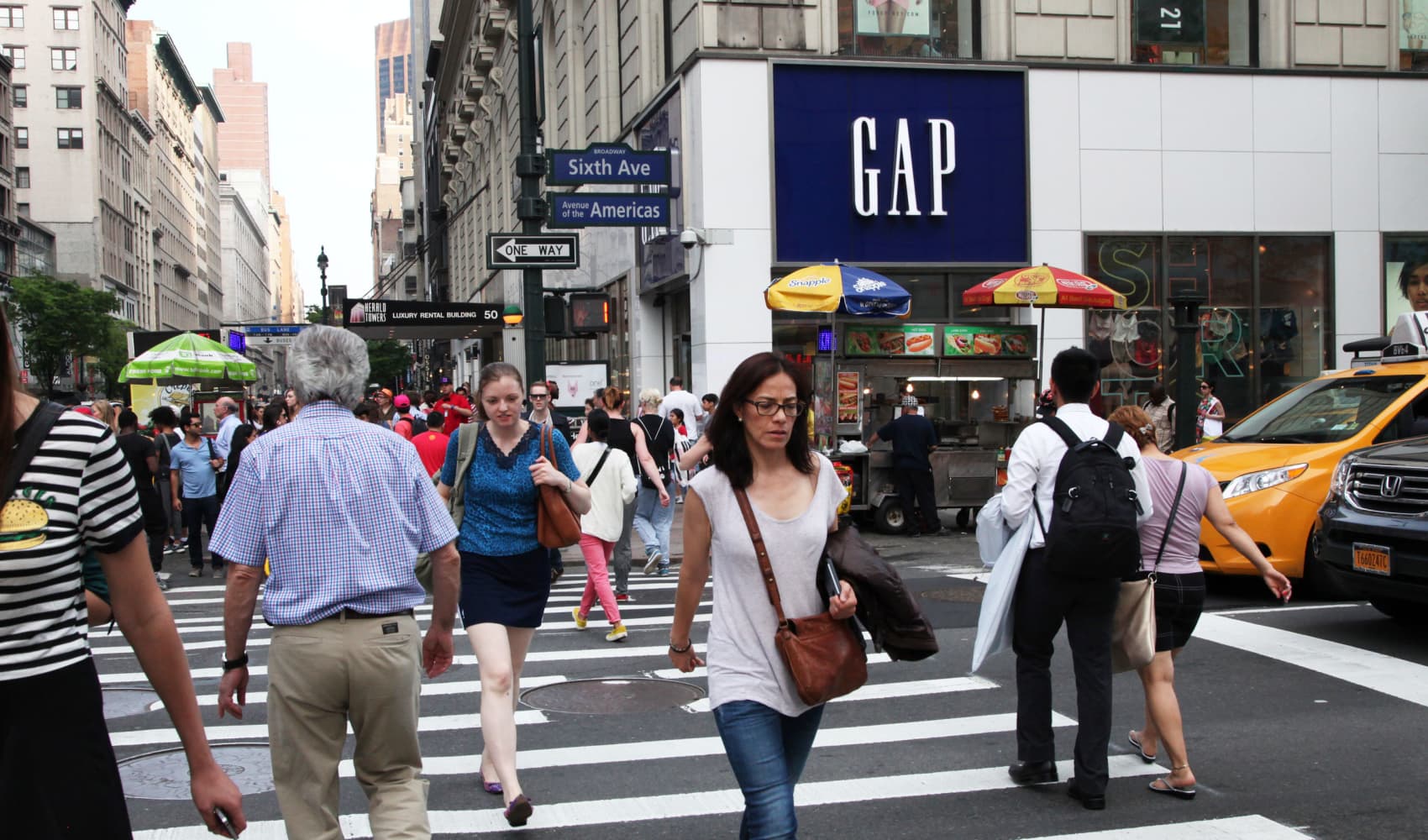
- New York flash flooding last week confirmed that climate change is outpacing infrastructure advancement, especially in the city.
- New York City' Chief Climate Officer Rohit Aggarwala has a vision for green infrastructure in the city, including turning basketball court enclosures into giant rain buckets and installing rain gardens on sidewalks.
- New York City's climate has warmed, making extreme weather events more frequent.
As New York residents and business owners recover their drenched and damaged properties from Friday's flash floods, city and state officials are confronting the reality that extreme weather is no longer just a passing phenomenon.
"There's no question that the rain on Friday is part of a pattern that is directly linked to climate change," New York City Chief Climate Officer Rohit Aggarwala told CNBC in an interview.
He grew up in New York when winters were snowy and summers were hot but bearable. He said today's New York reminds him more of Miami than the place he remembers from childhood.
Get top local stories in Connecticut delivered to you every morning. Sign up for NBC Connecticut's News Headlines newsletter.
In 2020, the National Climate Assessment changed New York City's climate classification from continental to humid subtropical characterized by mild winters, humid summers and intense rainfall.
The city has so far lived up to the new label. Winters have become noticeably warmer. And last week's storm added to the list of recent record rainfall, bringing back memories of Hurricane Henri in August 2021 and Hurricane Ida in September 2021.
"What we once thought of as a rare event, a low probability of occurrence – maybe these events are increasing in frequency," said Nelson Vaz, a meteorologist at the New York office of the National Weather Service.
Money Report
Aggarwala is leading the charge on the city's climate adaptation strategy.
When it comes to rain, Aggarwala is concerned about the lack of "permeable surfaces" in the city due to people paving over lawns and grass in favor of, for example, new parking spots.
"What that means is that there's nowhere for the rainwater falling on that property to go," he said.
Some ways he's looking to address it: Turning basketball court enclosures into giant rain buckets, developing pockets of wetlands, installing so-called rain gardens on sidewalks, and building walls along the shorelines to keep out coastal storms.

The basketball court strategy is an example of "cloudburst design," or infrastructure developed specifically for sudden, heavy rainfall like that of last week. Cloudburst basketball courts are depressed into the ground with crowd seating surrounding it, creating an enclosure that could hold excessive storm water. The same idea could be applied to create cloudburst gardens.
New York's cloudburst infrastructure was piloted in the Jamaica neighborhood of Queens. In January, Mayor Eric Adams announced funding for more cloudburst projects in Queens, as well as the Bronx and Brooklyn.
Another flood-proofing venture is The Bluebelt Program, an initiative that connects storm sewers to ponds, rivers and other wetlands in New York City to create natural detours for excess rain. It's mostly been developed in Staten Island, which Aggarwala says is part of the reason the borough experienced minimal flooding on Friday.

New York City environmental agencies are also working on installing rain gardens. To the average New Yorker, Aggarwala said, a rain garden might just look like "a tree pit with no tree." The gardens receive rain water via a downward slope on the curb of the road, which diverts runoff from overtaxed sewers and puts it to gardening use. Roughly 12,000 rain gardens have already been installed in New York City sidewalks, according to Aggarwala.

Along with extreme rainstorms, the climate chief is equally or more concerned about the threat of extreme heat, which causes more fatalities in the city rainfall. His office is working with the city to develop a mandate for air conditioning in residential buildings. In September, New York Governor Kathy Hochul approved the installation of 30,000 window heat pump units, which can be used to heat as well as cool the air in buildings.
"Not just a couple of projects"
These are just single pieces of the system-wide overhaul needed to get New York City's infrastructure up to speed.
"It's a citywide effort, it's not just a couple of projects that I can just list," Aggarwala said.
That effort is behind schedule.
"Everything the science tells us is that it's going to get worse before it stabilizes," said Aggarwala. "Climate is changing faster than our infrastructure can keep up."
For example, one of Aggarwala's priorities is updating the sewer system so that it can handle more rain per hour. But he said that project would take between five to seven years and the city just got started on it last year.
In an audit of New York City's public transit system released on Friday, State Comptroller Thomas DiNapoli said that the Metropolitan Transit Authority has not kept pace with its climate development pledges.
In response, MTA spokesperson Michael Cortez said in a statement, "The MTA has spent the last 16 years dealing with and learning from increasingly significant storms, constantly enhancing our infrastructure."
Even with the green investments made over the past few years, the city is lagging behind the ideal timeline.
"We would have needed to start this 30 years ago to even have a chance," said Jeffrey Schlegelmilch, the director of the National Center for Disaster Preparedness at Columbia Climate School. "In the meantime, I think we have to start looking at our response systems."
Mayor Eric Adams took some heat for his delayed response to the flooding, making a statement about the storm nearly 24 hours after officials issued flash flood warnings.
"We have never proclaimed once that we are perfect. In fact, I've made it clear over and over again that I'm perfectly imperfect," Adams said at a Tuesday press conference. "The team is going to continuously evolve as we come with these unprecedented storms that are hitting us."
As extreme weather outpaces infrastructure preparedness, experts and officials have urged New Yorkers to start preparing themselves for the new normal.
Schlegelmilch advises New Yorkers to inspect their homes and identify where the most likely flood areas are – then keep electronics and important documents out of them. He also suggests connecting with neighbors and community organizations to develop neighborhood-wide resources and support systems in times of flooding.
Aggarwala wants residents to buy flood insurance.
"If you live in Florida, you've always known that hurricanes can kill you. If you live in Nebraska, you've always known that you have to protect yourself from tornadoes. If you live in California, you know you have to get ready for the big earthquake that's coming," said Aggarwala. "New Yorkers have to start thinking about extreme weather in the same way."






